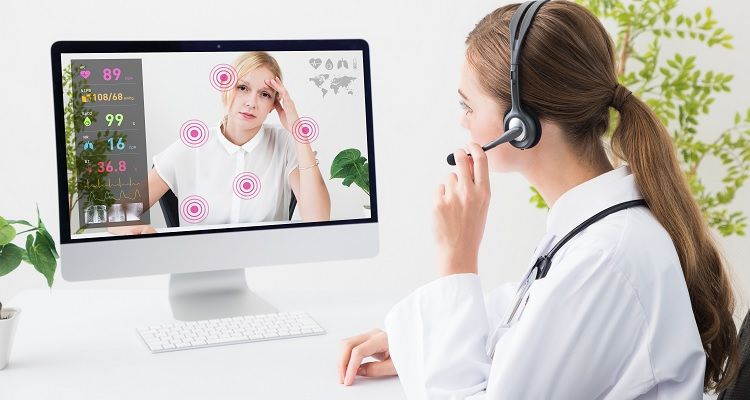The Acceptance of Telemedicine service at the veterinary profession in Bangladesh. According to Wallack–Telemedicine is the remote delivery of healthcare services, such as health assessments or consultations, over the telecommunications infrastructure. This is an important feature of health services in the 21st century. Sometimes it’s called telehealth or e-medicine. It’s nowadays using widely and growing It’s importance more rapidly than before. It’s become clear when we see the statistics on telemedicine services and estimated that the telemedicine market in the U.S. is expected to grow by about 35 billion dollars by 2025.
So we can easily expect the value of telemedicine. Having a lot of upsides it becomes more and more useable in the next decades. Having more beneficial effects and some challenges Bangladesh is also being the part of telemedicine services and was initiated by “Swinfen”, a charitable organization in 1999 and we have passed almost 20 years of telemedicine entry. Although having some problem, it’s becoming important increasingly day by day.
As demand for veterinary service increasing rapidly, veterinary service also entered a few steps on Vet telemedicine services and It’s the crying need to give more attention to this portion of the health service. There are several institutions and clinics opened their telemedicine services but not focused at all.
Having a lot of challenges in spreading telemedicine services in Bangladesh, It’s become quite inactive comparing the world countries. The main challenges are:
- According to the American Veterinary Medical Association(AVMA) website, telehealth is a term that covers all uses of technology to help the veterinary profession to provide remote access to health information, education, and/or care. So the First questionaries who will provide the services? As Human health service, comparatively the number of doctors is less. So getting doctors is the number one problem in Bangladesh.
- It’s also important to make the financial coverage of a veterinarian or clinician who will willing to provide the services, but comparing the developed country the investment mentality is less, if we see in America, they were expected to spend $75.38 billion on pet services and products by the end of 2019. So giving proper financial coverage is also the point. Either It’s provided by the owners of the animal or subsidy by the government. As there are no specific rules, so It’s quite challenging to take the risk as a veterinarian or a vet clinician.
- Already It’s known to all; our patients don’t talk to the doctor. So examining the patients closely is only the option. When doctors going to use telemedicine services, examining the patients become quite difficult. So it’s also the challenge of veterinary telemedicine. Although an experienced veterinarian or doctor has the ability to treat his patients by hearing the sign from the owners.
The acceptance rate in the owners is one of the big questions. Either it happens for the lack of knowledge or availability of the tools to use for consults like internet or mobile-phone technology.
- The first question is? Our farmers are not much educated like American farmers or pet owners, so acquiring belief is the toughest point. It’s to depend on a farmer’s past experience or knowledge on it.
- The second question? We are not as much as developed in communication technology like the developed country. Although having a mobile phone is common but additionally, internet connection or other communication-related things are rare in Bangladesh. So its also the challenging point to connect with the owner fully according to doctors’ needs.
- One thing we can’t ignore as a developing country, rumors or faking tendency is the common features of such a country like Bangladesh. So It’s no clear either someone take the opportunity or not. It may occur, because it’s quite easy to cheat the owner and which finally added to the owner’s beliefs.
Having a lot of challenges, there’s a lot of opportunities that have also been established opening telemedicine services in veterinary practices and it gives a clear green light of its bright future.
According to Wikipedia, about 2.9% of the national GDP is covered by the livestock sector, and its annual rate of growth is 5.5%. About 20% of the population of Bangladesh earn their livelihood through work associated with raising cattle and poultry. The current statistics show that in Bangladesh 25.7 million cattle, 0.83 million buffaloes, 14.8 million goats, 1.9 million sheep, 118.7 million chicken. So we can easily observe how important veterinary services are in contrast to Bangladesh.
Day by day more peoples are engaging with it to become self-employed. So telemedicine in veterinary practices can open a new window.
- As the government appreciates and giving the subsidy on both the telecommunication sector and livestock sector, so it’s a chance to open telemedicine services every corner of Bangladesh rapidly.
- Another thing, it’s quite easy to long time monitoring of the patients without getting physical contact, it will save Money both the owners of the patient and the veterinarian.
- Thirdly it can also open a new sector for the veterinarian who is trying to get involved in-field practices.
Above all discussion there’s we see a clear picture of the opportunity and limitations of veterinarian telemedicine services in Bangladesh. But one thing to add, Until the owner and doctors don’t come to the same points this is not possible to establish its rapidly in Bangladesh as well as worldwide.
So finally, we can say that having a lot of opportunities, if veterinarians and the authorities come forward to speared it every corner of the country, Its possible and can add a great impact on our economy.
Rony Ibne Masud
Faculty of Veterinary science
Bangladesh agricultural university,Mymensingh-2202


